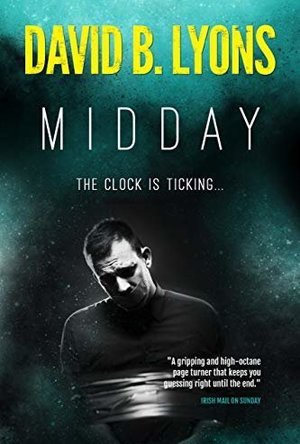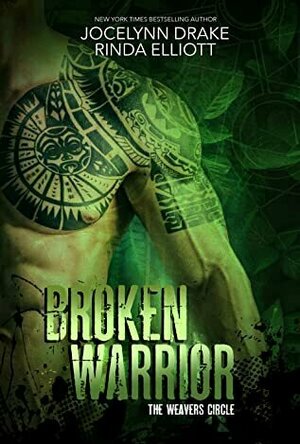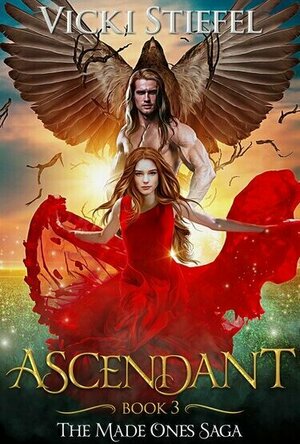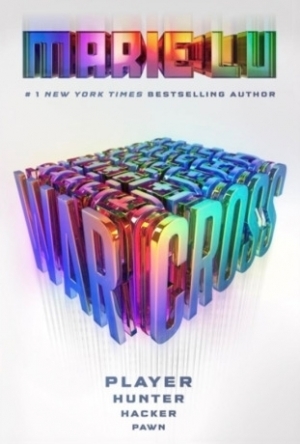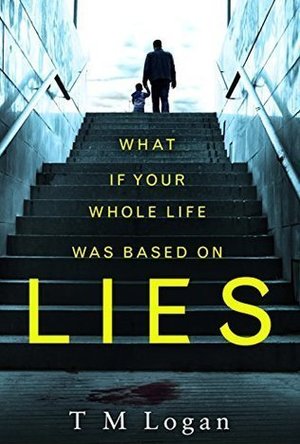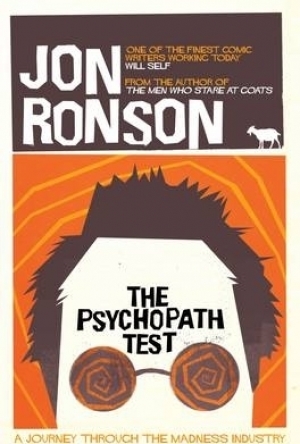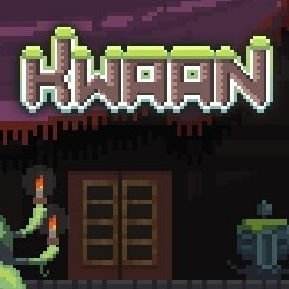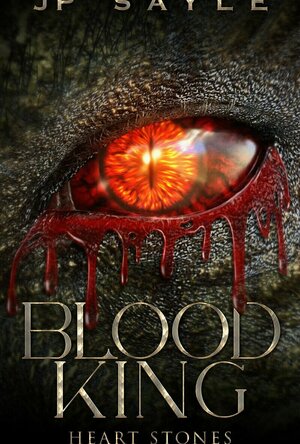Search
Sassy Brit (97 KP) rated Midday in Books
Jun 6, 2019
Contains spoilers, click to show
^^ Okay, so imagine the scene. Gay couple, Vincent and Ryan are living in a beautiful penthouse – a dream home only the rich can afford. Vince has a great job at a bank, with much responsibility; it’s how he can afford the place they live, and how Ryan gets to be a ‘kept man’, whilst he works from home writing his future bestseller. What a perfect life, eh?
^^ Nope. In reality they’ve a strained love, hate relationship. Ryan is high on drugs most of the time and not getting his bestseller written at all. And Vince, well, he’s just been accosted by a man called Darragh, who demands that he withdraw eight million Euros (2 from each bank he is in charge of) and deliver it back to him at the Penthouse, by midday – or he shoots Ryan dead! It’s far from the perfect life we are first lead to believe.
^^ What a fabulous read! There are several parts to this book which made this so much more than just a ‘grab the cash and save my boyfriend from dying’ story. Yes, that is the main theme, but the way it was written took the story much deeper and darker then I ever expected.
^^ The story is told from four different perspectives, Vince, Ryan, Darragh and Jack. We watch how Vince has the pressure to get the money to save his boyfriend. We hear about Ryan and what he really gets up to, and how he is being kept hostage in his own penthouse by Darragh fearing his possible death in only a few hours – if Vince doesn’t make it back in time. We also hear the thoughts and ideals of both the baddies, and they all have something worthwhile to bring to the story, which is why I think I enjoyed this read so much. At least a huge part of why!
^^ I did have one small gripe – the flashbacks – once I got used to this author’s style, I adjusted the way I read it. But I would’ve preferred perhaps a paragraph break, so I didn’t just get thrown out of the story at times this happened. Admittedly, some transitions were better than others.
^^ Despite this, I did find this a terrific read in other areas, and have to mention (in my usual semi-cryptic way, as to not give away spoilers) how I loved fearing for Ryan’s safety at the beginning, and then as I raced through the book, I changed my view of him and wanted him dead myself! Cleverly done, David B. Lyons!
^^ The use of wannabe gangster and rookie murderer Darragh was also very well woven into the story, as was the mysterious Jack.
Overall:
Midday: A tense, fast read, filled with dark secrets, betrayal, and an ending so twisted I didn’t see it rounding the corner until it was on top of me! NICE!
^^ Nope. In reality they’ve a strained love, hate relationship. Ryan is high on drugs most of the time and not getting his bestseller written at all. And Vince, well, he’s just been accosted by a man called Darragh, who demands that he withdraw eight million Euros (2 from each bank he is in charge of) and deliver it back to him at the Penthouse, by midday – or he shoots Ryan dead! It’s far from the perfect life we are first lead to believe.
^^ What a fabulous read! There are several parts to this book which made this so much more than just a ‘grab the cash and save my boyfriend from dying’ story. Yes, that is the main theme, but the way it was written took the story much deeper and darker then I ever expected.
^^ The story is told from four different perspectives, Vince, Ryan, Darragh and Jack. We watch how Vince has the pressure to get the money to save his boyfriend. We hear about Ryan and what he really gets up to, and how he is being kept hostage in his own penthouse by Darragh fearing his possible death in only a few hours – if Vince doesn’t make it back in time. We also hear the thoughts and ideals of both the baddies, and they all have something worthwhile to bring to the story, which is why I think I enjoyed this read so much. At least a huge part of why!
^^ I did have one small gripe – the flashbacks – once I got used to this author’s style, I adjusted the way I read it. But I would’ve preferred perhaps a paragraph break, so I didn’t just get thrown out of the story at times this happened. Admittedly, some transitions were better than others.
^^ Despite this, I did find this a terrific read in other areas, and have to mention (in my usual semi-cryptic way, as to not give away spoilers) how I loved fearing for Ryan’s safety at the beginning, and then as I raced through the book, I changed my view of him and wanted him dead myself! Cleverly done, David B. Lyons!
^^ The use of wannabe gangster and rookie murderer Darragh was also very well woven into the story, as was the mysterious Jack.
Overall:
Midday: A tense, fast read, filled with dark secrets, betrayal, and an ending so twisted I didn’t see it rounding the corner until it was on top of me! NICE!
Debbiereadsbook (1582 KP) rated Broken Warrior (The Weavers Circle #1) in Books
Apr 27, 2020
This series is gonna be amazing!
Independent reviewer for GAy Romance Reviews, I was gifted my copy of this book.
Running from what, he doesn't know, but Clay needs to run, and run south. He follows his instincts and finds himself in a fight to save the earth from destruction. Dane finds himself fighting his attraction to Clay, even as he fights himself over his guilt at the death of his wife and son. Dane doesn't know whats going on in the house, but he wants to find out, and he knows, deep down, he wants Clay.
So! Different, very different and I really rather loved it!
Clay finds himself at the helm of The Weavers. These are a band of 6 brothers, that come together time and time again to save the earth from destruction by beings from another dimension. And when i say time and time AGAIN, I mean that quite literally. The Weavers have been gathered together many times over the years and they have yet to finally close the rift that bring the beings to earth. Maybe this time will be different but the Goddess who brings Clay to the house doesn't know why they didn't manage to close the rift yet. Her and her sisters are hoping this time they will.
I loved Clay and I loved Dane. I loved Grey and Bear too, another 2 of the brothers who manage to get to the house in this book. I'm assuming they will get their own books at some point. The three Goddesses keep popping in and out, and they are amusing at times, in that they are VERY cryptic in what they are letting these three brothers know, in this book, anyway.
They are also, I think, tired. Having been doing this song and dance for EVER, there comes a time when anyone would say, enough is enough. I *think* this might be the case, although nothing is actually said here, it's just an impression I get.
I loved this book, I really did. Not quite a one sitting, cos, you know, a girl gotta sleep, but very nearly.
Both Clay and Dane have a say, although at first I thought it might just be Clay. You get all their interactions in the beginning, and what I really liked, when I realised Dane would get a say, was that we get all his fighting with himself. We get Clay's fighting with the beings, but it is Dane's fighting with himself, with his guilt and his feelings for his dead wife, and for Clay, that really make this book, for me anyway.
It's sexy, but its equally deadly. The fights are described in some detail, but I liked that.
I really like how this book lays most of it out for you, but I have a feeling there is MUCH we don't know yet. I really look forward to reading future books in this series!
5 very excited for the next book stars
Running from what, he doesn't know, but Clay needs to run, and run south. He follows his instincts and finds himself in a fight to save the earth from destruction. Dane finds himself fighting his attraction to Clay, even as he fights himself over his guilt at the death of his wife and son. Dane doesn't know whats going on in the house, but he wants to find out, and he knows, deep down, he wants Clay.
So! Different, very different and I really rather loved it!
Clay finds himself at the helm of The Weavers. These are a band of 6 brothers, that come together time and time again to save the earth from destruction by beings from another dimension. And when i say time and time AGAIN, I mean that quite literally. The Weavers have been gathered together many times over the years and they have yet to finally close the rift that bring the beings to earth. Maybe this time will be different but the Goddess who brings Clay to the house doesn't know why they didn't manage to close the rift yet. Her and her sisters are hoping this time they will.
I loved Clay and I loved Dane. I loved Grey and Bear too, another 2 of the brothers who manage to get to the house in this book. I'm assuming they will get their own books at some point. The three Goddesses keep popping in and out, and they are amusing at times, in that they are VERY cryptic in what they are letting these three brothers know, in this book, anyway.
They are also, I think, tired. Having been doing this song and dance for EVER, there comes a time when anyone would say, enough is enough. I *think* this might be the case, although nothing is actually said here, it's just an impression I get.
I loved this book, I really did. Not quite a one sitting, cos, you know, a girl gotta sleep, but very nearly.
Both Clay and Dane have a say, although at first I thought it might just be Clay. You get all their interactions in the beginning, and what I really liked, when I realised Dane would get a say, was that we get all his fighting with himself. We get Clay's fighting with the beings, but it is Dane's fighting with himself, with his guilt and his feelings for his dead wife, and for Clay, that really make this book, for me anyway.
It's sexy, but its equally deadly. The fights are described in some detail, but I liked that.
I really like how this book lays most of it out for you, but I have a feeling there is MUCH we don't know yet. I really look forward to reading future books in this series!
5 very excited for the next book stars
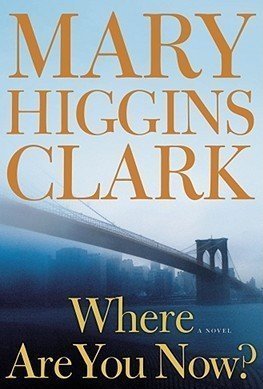
Where Are You Now?
Book
From America's Queen of Suspense comes a gripping tale of a young woman trying to unravel the...

Richard Patterson - Matters of Life and Death
Paul Moorhouse, Matt Price, Jane Neal and James Cahill
Book
Matters of Life and Death is a limited-edition publication documenting the remarkable new and recent...
Debbiereadsbook (1582 KP) rated Ascendant (The Made Ones Sage #3) by Vicki Stiefel in Books
Jun 10, 2022
a fitting end, the best one!
Independent reviewer for Archaeolibrarian, I was gifted my copy of this book.
This is book 3 in The Made Ones Saga and cannot be read as a stand alone book. You NEED to read book one, Changed, and book 2, Altered, before this one. Not only will it give you Kit and Bree’s stories, it will fill in the questions to the answers that are given here!
Sybi is the third sister and her story is a little different, having been kept in stasis for some time. Kestrel knows she is his, but given his genetic make up, and what happened to him before, he is reluctant to fully bond with Sybi. But he has to, to get them out of a pickle!
Kestrel’s full story isn’t made clear for quite some time, and I wanted it sooner cos I’m greedy like that! Also, Sybi’s is quite drawn out, and I got a little frustrated at times with Mother Tree and her cryptic clues!
Kes and Sybi’s relationship kinda gets lost in the plans for the battle to bring the Alchemists down, though, and I really wanted more of them two, dealing with their feelings for the other and what it all means.
That said, I really thought this was a fitting ending and I bloody loved it! Best of the three!
I loved how all three sisters knew that they had to defy their mates, but also that said mates KNEW that they would. I loved that the entire planet comes together to stop Fukkes and thwart his plans to take over Earth.
It’s dark in places, when they discover to what extent Fukkes has been experimenting on the people of Eleutia. It’s emotional, when the three sisters are fully reunited. It’s a bit amusing: the sisters way they defy their mates made me giggle a time or two! There is some smexy times between Sybi and Kes, but it does get a bit lost.
I do feel, though, (and ya’ll know I’m ALLLLLLLLLLLLLLLL about the book feelings) that this is NOT the end. Yes, they’ve saved Eleutia from Fukkes, and the Overseers have apologised for not keeping a tighter reign on him, and the Clans have come together, and the female birth rate is already increasing, but Mother Tree is growing, and Marie grows, and what the chuffing heck does that mean! Marie was the youngest sister who died when she was ten ( I think!) on Earth so how can she be growing??? Questions, people! I’m left with unanswered questions!
So, do I gotta beg for another visit to this world and the people in it? Cos I will, you know! I’ll get down on my knees if needed (might need a lift back up though!)
5 full and shiny stars
*same worded review will appear elsewhere
This is book 3 in The Made Ones Saga and cannot be read as a stand alone book. You NEED to read book one, Changed, and book 2, Altered, before this one. Not only will it give you Kit and Bree’s stories, it will fill in the questions to the answers that are given here!
Sybi is the third sister and her story is a little different, having been kept in stasis for some time. Kestrel knows she is his, but given his genetic make up, and what happened to him before, he is reluctant to fully bond with Sybi. But he has to, to get them out of a pickle!
Kestrel’s full story isn’t made clear for quite some time, and I wanted it sooner cos I’m greedy like that! Also, Sybi’s is quite drawn out, and I got a little frustrated at times with Mother Tree and her cryptic clues!
Kes and Sybi’s relationship kinda gets lost in the plans for the battle to bring the Alchemists down, though, and I really wanted more of them two, dealing with their feelings for the other and what it all means.
That said, I really thought this was a fitting ending and I bloody loved it! Best of the three!
I loved how all three sisters knew that they had to defy their mates, but also that said mates KNEW that they would. I loved that the entire planet comes together to stop Fukkes and thwart his plans to take over Earth.
It’s dark in places, when they discover to what extent Fukkes has been experimenting on the people of Eleutia. It’s emotional, when the three sisters are fully reunited. It’s a bit amusing: the sisters way they defy their mates made me giggle a time or two! There is some smexy times between Sybi and Kes, but it does get a bit lost.
I do feel, though, (and ya’ll know I’m ALLLLLLLLLLLLLLLL about the book feelings) that this is NOT the end. Yes, they’ve saved Eleutia from Fukkes, and the Overseers have apologised for not keeping a tighter reign on him, and the Clans have come together, and the female birth rate is already increasing, but Mother Tree is growing, and Marie grows, and what the chuffing heck does that mean! Marie was the youngest sister who died when she was ten ( I think!) on Earth so how can she be growing??? Questions, people! I’m left with unanswered questions!
So, do I gotta beg for another visit to this world and the people in it? Cos I will, you know! I’ll get down on my knees if needed (might need a lift back up though!)
5 full and shiny stars
*same worded review will appear elsewhere
A Bibliophagist (113 KP) rated Warcross in Books
Jan 27, 2020
Decent characters (2 more)
Plot
Pacing
YA formula (2 more)
Predictable
Not enough of the game
YA VR fun
I really enjoyed this book, as VR stories are some of my favorite types and rarely done well. This one was done well enough but suffered the large YA pitfall of there would be no story had people actually communicated with each other.
The story follows Emika, a scrappy teen living in the slums of (I think New York). As YA books tend to do, she is a normal, poor, orphan girl, who happens to be able to afford to dye her hair rainbow, and oh, I forgot to mention, very good at hacking. The world is fully submerged into the Nuerolink, which are AR/VR glasses almost everyone has, that handle the internet, gaming worlds, infrastructure etc etc. The most popular aspect is a game on the Nuerolink called Warcross, a rather simple Team vs Team capture the flag with power-ups and battling. Football move over, Warcross is where it's at. Because the nuerolink is so ingrained into society, a seedy underbelly of gambling and dark web has cropped up, and Emika makes her pennies as a bounty hunter for people who gamble in Warcross games. On the eve of the Opening of the biggest Warcross Tournament of the year (which takes up like... 6 months of the year...) Emika is being threatened with eviction, failed to get a bounty that would have fixed her situation. So as far as YA tropes go we can check off "ordinary, but special girl of poor circumstances".
Emika and her roommate, even though they are facing a looming eviction, log into the neurolink to experience the opening day ceremony. This is where Lu really introduces the ability of the nuerolink and where we can underline the "special" aspect of our tropey lead, as she somehow hacks herself into the opening game ceremony, revealing herself to the world. This is probably a good place to point out that hacking in this book is pretty much just Emika saying "I hacked into this thing" and little more than that. She runs a program here and there, that always does what she wants. Honestly as the story progresses I forget that she hacks, but the book doesn't let you forget that she's "super good at it".
Now fearing more than just eviction, but fearing for her freedom as she just did something very illegal, Emika is surprised when her world is turned upside down and she's spirited away by the Nuerolink creator to Tokyo. The creator being hot boy Hideo, whom she has been just ever so obsessed with since she was a kid, and much to her fantasies, he thinks she is special and needs her hacker expertise to track down someone that's been messing with the code in the game. BUT she needs to do it from within the game. So now she's going to be in the big game of the year as a player, a spy, and a hacker. Somehow juggling the investigation and playing a game professionally that she's the only kind of dabbled in (as far as we know, YA spoiler alert, she's super good at it).
I know I sound snarky, and like I didn't like the book, but I did. once you just accept the YA formula and that this book will be full of it, you can just lean back an enjoy the ride. Emika finds herself in a deep plot that involves other players, the dark web, and the ghosts of Hideo's past. Of course because YA Hideo is just smitten with Emika from the get go. She's great at the game, everyone acknowledges how special she is, but the big YA factor I struggled with over looking was the utter lack of communication. This whole book could've ended in a few chapters had the characters just communicated with each other. But there was always some kind of personal justification for why they couldn't just talk to each other.
I found the game world to be well thought out and interesting, just unfortunately it didn't get nearly as much page time as I'd like. I get that the story is about the scheme around the game, and not the game, but Lu introduced her as a player so I wanted more. I wanted more intereaction with her teammates, more development. She never felt like she was part of the group to me, which made it harder to believe in the second book when they all go out of their way to help her. The romance with Hideo was heavy-handed but cute, so I didn't mind it. But I kept finding myself wanting more gameplay. It's called Warcross for goodness sake.
One thing I have to commend Lu on is that it has a decent number of legitimate twists. Twists that made me actually gasp once or twice. That kept me intrigued and made me read it in a day. But unfortunately, while a fun little romp, the story's reliance on bad communication and YA tropes to advance the plot made the book lack a soul that really could take the story to the next level. I didn't care too much about anyone. I just wanted answers more than anything. But instead, we get a mysterious bad guy being cryptic, even though if he wasn't cryptic we could have avoided a lot and Emika always winning cause she's special. Though most of the information she gets is freely given to her and had nothing to do with her skills as a hacker.
When my boyfriend asked me if I liked it, I shrugged and said "yea it was fun, can we go get the second book". But I didn't have the overwhelming desire to tell him the plot or anything else as I do with books that truly resonate with me. To be fair when I did attempt to describe it the soap opera YA aspect seemed glaring and he just rolled his eyes.
Absolutely worth a read, especially if you enjoy this genre. But just don't go in expecting it to be special, it follows the YA formula to a T.
The story follows Emika, a scrappy teen living in the slums of (I think New York). As YA books tend to do, she is a normal, poor, orphan girl, who happens to be able to afford to dye her hair rainbow, and oh, I forgot to mention, very good at hacking. The world is fully submerged into the Nuerolink, which are AR/VR glasses almost everyone has, that handle the internet, gaming worlds, infrastructure etc etc. The most popular aspect is a game on the Nuerolink called Warcross, a rather simple Team vs Team capture the flag with power-ups and battling. Football move over, Warcross is where it's at. Because the nuerolink is so ingrained into society, a seedy underbelly of gambling and dark web has cropped up, and Emika makes her pennies as a bounty hunter for people who gamble in Warcross games. On the eve of the Opening of the biggest Warcross Tournament of the year (which takes up like... 6 months of the year...) Emika is being threatened with eviction, failed to get a bounty that would have fixed her situation. So as far as YA tropes go we can check off "ordinary, but special girl of poor circumstances".
Emika and her roommate, even though they are facing a looming eviction, log into the neurolink to experience the opening day ceremony. This is where Lu really introduces the ability of the nuerolink and where we can underline the "special" aspect of our tropey lead, as she somehow hacks herself into the opening game ceremony, revealing herself to the world. This is probably a good place to point out that hacking in this book is pretty much just Emika saying "I hacked into this thing" and little more than that. She runs a program here and there, that always does what she wants. Honestly as the story progresses I forget that she hacks, but the book doesn't let you forget that she's "super good at it".
Now fearing more than just eviction, but fearing for her freedom as she just did something very illegal, Emika is surprised when her world is turned upside down and she's spirited away by the Nuerolink creator to Tokyo. The creator being hot boy Hideo, whom she has been just ever so obsessed with since she was a kid, and much to her fantasies, he thinks she is special and needs her hacker expertise to track down someone that's been messing with the code in the game. BUT she needs to do it from within the game. So now she's going to be in the big game of the year as a player, a spy, and a hacker. Somehow juggling the investigation and playing a game professionally that she's the only kind of dabbled in (as far as we know, YA spoiler alert, she's super good at it).
I know I sound snarky, and like I didn't like the book, but I did. once you just accept the YA formula and that this book will be full of it, you can just lean back an enjoy the ride. Emika finds herself in a deep plot that involves other players, the dark web, and the ghosts of Hideo's past. Of course because YA Hideo is just smitten with Emika from the get go. She's great at the game, everyone acknowledges how special she is, but the big YA factor I struggled with over looking was the utter lack of communication. This whole book could've ended in a few chapters had the characters just communicated with each other. But there was always some kind of personal justification for why they couldn't just talk to each other.
I found the game world to be well thought out and interesting, just unfortunately it didn't get nearly as much page time as I'd like. I get that the story is about the scheme around the game, and not the game, but Lu introduced her as a player so I wanted more. I wanted more intereaction with her teammates, more development. She never felt like she was part of the group to me, which made it harder to believe in the second book when they all go out of their way to help her. The romance with Hideo was heavy-handed but cute, so I didn't mind it. But I kept finding myself wanting more gameplay. It's called Warcross for goodness sake.
One thing I have to commend Lu on is that it has a decent number of legitimate twists. Twists that made me actually gasp once or twice. That kept me intrigued and made me read it in a day. But unfortunately, while a fun little romp, the story's reliance on bad communication and YA tropes to advance the plot made the book lack a soul that really could take the story to the next level. I didn't care too much about anyone. I just wanted answers more than anything. But instead, we get a mysterious bad guy being cryptic, even though if he wasn't cryptic we could have avoided a lot and Emika always winning cause she's special. Though most of the information she gets is freely given to her and had nothing to do with her skills as a hacker.
When my boyfriend asked me if I liked it, I shrugged and said "yea it was fun, can we go get the second book". But I didn't have the overwhelming desire to tell him the plot or anything else as I do with books that truly resonate with me. To be fair when I did attempt to describe it the soap opera YA aspect seemed glaring and he just rolled his eyes.
Absolutely worth a read, especially if you enjoy this genre. But just don't go in expecting it to be special, it follows the YA formula to a T.
Wild, creepy & a little stressful
When Joe Lynch and his young son, William, spot his wife's car while out driving, they decide to surprise her. Instead they see his wife, Melissa, fighting with a friend, Ben. Joe knows he should help Melissa, but when he goes to confront Ben, it goes horribly wrong. The two fight and after Ben hits him, Joe pushes him back and Ben falls and hits his head. At the same time, his son has an asthma attack--and realizing he doesn't have William's inhaler--Joe has to make a choice: race home for the inhaler or stay and make sure Ben is okay. He chooses his son, setting off a chain of crazy events that will forever alter the course of his life.
"I put the car in gear. Made a spur-of-the-moment decision that would change my life. 'Let's go and surprise Mummy.'"
This was an odd book that messes with your head as much as all the insane events seem to do to Joe's. It got off to a slow start for me, and I almost didn't keep reading, but I have a terrible time putting any book in a "DNF" pile, and of course, this one picked up and got pretty exciting about halfway through. (This only adds to my inability to ever not finish a book.)
The main shtick with this one is sort of an unreliable narrator/unreliable plot, as you really don't know who or what to believe as you read. Hence the title, obviously. As it all happens we have Joe, who sort of bumbles along, our hapless narrator, who seems to think he's in control, but really, just no. Poor guy, he's certainly not the brightest--just this clueless guy whom I had a tough time rooting for, hence my inability to really get into the book.
Yes, most of the cast of characters around him are lying to him in some fashion, but still. After Joe leaves Ben in the parking garage to save William, he finds some weird and cryptic posts on his Facebook page, because (of course) he lost his (unlocked) cell phone during his altercation with (obviously tech-savvy) Ben who runs (wait for it) a technology firm. Then Melissa reveals to him that the wealthy Ben has been pining after her for ages, despite that fact that Ben's wife, Beth, is Melissa's best friend. Things unravel from there. I'll admit that they don't necessarily happen predictably, but they do happen in a crazy fashion, so be prepared to suspend a lot of your disbelief.
The book is kind of wild, a little creepy, and there's a good twist at the end, which bumped my rating up a half bomb. This wasn't a particularly fun read for me--it sort of stressed me out--and I didn't really like any of the characters, but once it picked it up, it was at least interesting.
I received a copy of this novel from the publisher and Netgalley in return for an unbiased review (thank you!).
"I put the car in gear. Made a spur-of-the-moment decision that would change my life. 'Let's go and surprise Mummy.'"
This was an odd book that messes with your head as much as all the insane events seem to do to Joe's. It got off to a slow start for me, and I almost didn't keep reading, but I have a terrible time putting any book in a "DNF" pile, and of course, this one picked up and got pretty exciting about halfway through. (This only adds to my inability to ever not finish a book.)
The main shtick with this one is sort of an unreliable narrator/unreliable plot, as you really don't know who or what to believe as you read. Hence the title, obviously. As it all happens we have Joe, who sort of bumbles along, our hapless narrator, who seems to think he's in control, but really, just no. Poor guy, he's certainly not the brightest--just this clueless guy whom I had a tough time rooting for, hence my inability to really get into the book.
Yes, most of the cast of characters around him are lying to him in some fashion, but still. After Joe leaves Ben in the parking garage to save William, he finds some weird and cryptic posts on his Facebook page, because (of course) he lost his (unlocked) cell phone during his altercation with (obviously tech-savvy) Ben who runs (wait for it) a technology firm. Then Melissa reveals to him that the wealthy Ben has been pining after her for ages, despite that fact that Ben's wife, Beth, is Melissa's best friend. Things unravel from there. I'll admit that they don't necessarily happen predictably, but they do happen in a crazy fashion, so be prepared to suspend a lot of your disbelief.
The book is kind of wild, a little creepy, and there's a good twist at the end, which bumped my rating up a half bomb. This wasn't a particularly fun read for me--it sort of stressed me out--and I didn't really like any of the characters, but once it picked it up, it was at least interesting.
I received a copy of this novel from the publisher and Netgalley in return for an unbiased review (thank you!).
BookblogbyCari (345 KP) rated The Psychopath Test in Books
Sep 11, 2018
This book is remarkably entertaining – I can see why it’s having such a long stint in the bookseller’s shelves! It’s most definitely written for the lay person, and that goes some way to explaining the book’s longevity.
It logs the course of events taken by Jon Ronson as he interviews some people who are deemed crazy, or psychopathic, and some people who diagnose psychological traits. The start of Ronson’s journey is intriguing - it begins when various academics, predominately neuroscientists, are sent mysterious and cryptic packages. They all rush onto online forums trying to figure out what it’s all about. Unfortunately, this section comes to an abrupt and disappointing conclusion (no spoilers).
This all changes in Chapter 2, however. Here, Ronson meets a man, Tony, who claims to have faked mental illness in order to get put into a psychiatric facility rather than a traditional prison. The Scientologists are on his side, and they send Ronson Broadmoor’s file on Tony, but with significant omissions, which shed a whole new light on why Tony should be incarcerated.
Chapter 3 describes how in the 1960’s psychiatrist Elliot Barker, held several nude LSD-induced psychotherapy sessions for psychopaths. In Chapter 4, Ronson goes on a conference to learn about Bob Hare’s psychopath checklist, and by Chapter 5, he’s using it in an interview with a leader of a death squad, Toto Constant. In Chapter 6, he uses it in an interview with Al Dunlan, who apparently enjoyed firing 6.000 people from their jobs.
Following a brief interlude to discuss the media, conspiracy theorists and the second coming, the theme of psychopathy is picked up again in Chapter 9 which looks at criminal profiling, and how it was once used to lure one particular suspect into an unwarranted arrest.
Ronson goes off on another tangent in Chapter 10, which discusses the (very real) problem of an apparent ballooning of mental illness diagnoses. Here he tells the tale of what happened when a 4-year-old girl was given 10 pills a day for “childhood bipolar” disorder.
In Ronson’s concluding chapter, he attends a tribunal for the Tony of Chapter 2, and Tony’s fate is decided (no spoilers). By this point, Tony’s charisma has got Ronson taken in, in spite of Tony showing several psychopathic traits.
My take away from the book is that people will have eccentricities, diagnosis or not, and the way to tell if someone is dangerous, is by their actions. Ronson himself has spotted psychopathic traits in himself, despite being overly anxious and not the slightest bit evil. The book sheds a lot of light, not only on the nature of obtaining a diagnosis, but also on its implications.
Whilst I do recommend the book, this book is most definitely not a thorough analysis of the mental health industry, nor the criminal profiling industry. But for entertainment purposes it gets top marks. If you are looking for a more authoritative book on the mental health industry and diagnosis, I recommend Saving Normal by Allen Frances.
It logs the course of events taken by Jon Ronson as he interviews some people who are deemed crazy, or psychopathic, and some people who diagnose psychological traits. The start of Ronson’s journey is intriguing - it begins when various academics, predominately neuroscientists, are sent mysterious and cryptic packages. They all rush onto online forums trying to figure out what it’s all about. Unfortunately, this section comes to an abrupt and disappointing conclusion (no spoilers).
This all changes in Chapter 2, however. Here, Ronson meets a man, Tony, who claims to have faked mental illness in order to get put into a psychiatric facility rather than a traditional prison. The Scientologists are on his side, and they send Ronson Broadmoor’s file on Tony, but with significant omissions, which shed a whole new light on why Tony should be incarcerated.
Chapter 3 describes how in the 1960’s psychiatrist Elliot Barker, held several nude LSD-induced psychotherapy sessions for psychopaths. In Chapter 4, Ronson goes on a conference to learn about Bob Hare’s psychopath checklist, and by Chapter 5, he’s using it in an interview with a leader of a death squad, Toto Constant. In Chapter 6, he uses it in an interview with Al Dunlan, who apparently enjoyed firing 6.000 people from their jobs.
Following a brief interlude to discuss the media, conspiracy theorists and the second coming, the theme of psychopathy is picked up again in Chapter 9 which looks at criminal profiling, and how it was once used to lure one particular suspect into an unwarranted arrest.
Ronson goes off on another tangent in Chapter 10, which discusses the (very real) problem of an apparent ballooning of mental illness diagnoses. Here he tells the tale of what happened when a 4-year-old girl was given 10 pills a day for “childhood bipolar” disorder.
In Ronson’s concluding chapter, he attends a tribunal for the Tony of Chapter 2, and Tony’s fate is decided (no spoilers). By this point, Tony’s charisma has got Ronson taken in, in spite of Tony showing several psychopathic traits.
My take away from the book is that people will have eccentricities, diagnosis or not, and the way to tell if someone is dangerous, is by their actions. Ronson himself has spotted psychopathic traits in himself, despite being overly anxious and not the slightest bit evil. The book sheds a lot of light, not only on the nature of obtaining a diagnosis, but also on its implications.
Whilst I do recommend the book, this book is most definitely not a thorough analysis of the mental health industry, nor the criminal profiling industry. But for entertainment purposes it gets top marks. If you are looking for a more authoritative book on the mental health industry and diagnosis, I recommend Saving Normal by Allen Frances.
Gareth von Kallenbach (980 KP) rated Kwaan in Video Games
Jun 19, 2019
This game reminds me an awful lot of proteus. Very little is told to you. Wandering around a pixelated island trying to sort things out. The point and click mechanics might make you nostalgic. A peppy atmosphere and creative out lets might have you coming back to see what the community has done to the trees and chalk boards.
The game is in early access and it does show. Platforming is going to take a long while to get used to. You get around by shooting a string and pulling yourself up to a point where he can swing to get to the platform sometimes this can be very frustrating. This could be fixed by letting you slide down on the string but that has yet to be seen.
Appearance I genuinely liked the sprite animation, seems like something you might see in say a late Nintendo to early super Nintendo. Intricate works of player art can be found here and there. The over world if bright and colorful during the day.
Quest systems and leveling are something I didn’t quite get here. The story is told in the back ground and you have to go hunting for it. I got caught up in the bright atmosphere and exploring that I really did not get around to that part of the game. There is quite a bit to explore if you have the time and patience.
Ambient music is here and it does suite the mood. I do feel like it’s on an endless loop. Not to mention in the version I’m playing on there is no option menu at all. So either mute all sounds or mute it in the volume mixer. Small problem I know but several small issues can culminate into a bit one.
Velocity is another challenge, you can find yourself making a gap sometimes. Other times you will not be so lucky. Getting your string to attach to a flock of seagulls or a school of fish can feel almost impossible. Spikes and death traps are abound. When you overcome these obstacles for say a treasure chest it can be a bit underwhelming.
The mystery to it all feels very cryptic. I for the life of me could not find anything out. Admittedly I’m terrible at these kind of puzzles. Some clues would be much appreciated. End of the world is coming is about the only thing I could figure out.
The intention of the game feels good. I can see a lot of love and time went into crafting this world. Even with all its color, ambiance and charm I can see the flaws. Early accesses is a phrase I think is more than apt here. However this could be something very special with just a few tweaks.
In the end I could only recommend this game to those willing to support a modern point and click platformer. If you grew up with platformers like Mario and castlevania this might just be a bit to different. Unless you’re willing to look past the controls and or love retro sprites.
http://sknr.net/2015/04/10/kwaan-a-point-and-click-adventure/
The game is in early access and it does show. Platforming is going to take a long while to get used to. You get around by shooting a string and pulling yourself up to a point where he can swing to get to the platform sometimes this can be very frustrating. This could be fixed by letting you slide down on the string but that has yet to be seen.
Appearance I genuinely liked the sprite animation, seems like something you might see in say a late Nintendo to early super Nintendo. Intricate works of player art can be found here and there. The over world if bright and colorful during the day.
Quest systems and leveling are something I didn’t quite get here. The story is told in the back ground and you have to go hunting for it. I got caught up in the bright atmosphere and exploring that I really did not get around to that part of the game. There is quite a bit to explore if you have the time and patience.
Ambient music is here and it does suite the mood. I do feel like it’s on an endless loop. Not to mention in the version I’m playing on there is no option menu at all. So either mute all sounds or mute it in the volume mixer. Small problem I know but several small issues can culminate into a bit one.
Velocity is another challenge, you can find yourself making a gap sometimes. Other times you will not be so lucky. Getting your string to attach to a flock of seagulls or a school of fish can feel almost impossible. Spikes and death traps are abound. When you overcome these obstacles for say a treasure chest it can be a bit underwhelming.
The mystery to it all feels very cryptic. I for the life of me could not find anything out. Admittedly I’m terrible at these kind of puzzles. Some clues would be much appreciated. End of the world is coming is about the only thing I could figure out.
The intention of the game feels good. I can see a lot of love and time went into crafting this world. Even with all its color, ambiance and charm I can see the flaws. Early accesses is a phrase I think is more than apt here. However this could be something very special with just a few tweaks.
In the end I could only recommend this game to those willing to support a modern point and click platformer. If you grew up with platformers like Mario and castlevania this might just be a bit to different. Unless you’re willing to look past the controls and or love retro sprites.
http://sknr.net/2015/04/10/kwaan-a-point-and-click-adventure/
Debbiereadsbook (1582 KP) rated Blood King (Heart Stones #1) in Books
May 4, 2022
Left with so many questions but so bloody good!!
Independent reviewer for Archaeolibrarain, I was gifted my copy of this book.
I'm not gonna write a bit about this book. I'm not gonna rehash any sort of plot line, but what I am gonna say is this:
ARGGGGGGGGGGGGGGGGGGHHHH!
Sayle has a particular way of messing with my head, she leaves me with question after question. Mostly, questions I cannot voice, but my head knows it has questions and Sayle drives me freaking nuts about it!
So, once I got over my spit-your-dummy-out, throw-your-toys-out-the-pram and I'll-scream-and-scream-and-scream-until-I'm-sick kind of tantrum, here's what I thought about this book.
So good, this first book in a new series, a very different book than of late for Sayle and I read this and flung my kindle at the wall and my partner looked at me like I grew a third head!
Why, you ask? Because questions, people, I have a lot, A LOT of freaking questions about this book and it's taken me 3 days to manage to write something about this book that actually makes sense!
I am, however, fairly certain that I will not be the only one why has questions, hell, I'm not even sure if Sayle has all the questions, let alone the answers to everything that was NOT said here.
Because while you get everything you need about Aion and Shiesha NOW, there is much, so (I really wanna use the Fword here but some sites don't like that, but I need to stress the point!) freaking MUCH, that is not said. About who Aion and Shiesha are running from, about what happened to Aion's family, about who Shiesha really is, about WHAT he is! And those bloody monks? Cryptic or what! But those monks, I understood. They are bound by a higher power and sworn to secrecy. Aion and Shiesha have all the answers, they just need to listen to their hearts to find them.
And then we get to the ending! A cliff hanger, people, of massive proportions! I knew this was coming, the blurb says so, but still. I had 10 minutes left in the book and then it was finished and sheesh, I was not happy! There is a teeny tiny bit that happens next, a bit of an epilogue slash sneak peak but I would rather have not had that, to be honest! I think it would have had a bigger reaction from people to not have that sneak peak, and I am left a little . . .annoyed . . .maybe. . . by it! I don't know WHY, but book feelings, people, I'm sharing my book feelings!
Anyway!
Because I have questions;
because I read it in one sitting;
because I threw my kindle at the wall (and it's been a long ass time since I did that!)
because of that freaking cliff hanger;
because, even, of that sneak peek;
because it's my review and I can. . .
5 freaking amazing stars!
But write quicker, Ms Sayle.
Write.
Quicker.
*same worded review will appear elsewhere
I'm not gonna write a bit about this book. I'm not gonna rehash any sort of plot line, but what I am gonna say is this:
ARGGGGGGGGGGGGGGGGGGHHHH!
Sayle has a particular way of messing with my head, she leaves me with question after question. Mostly, questions I cannot voice, but my head knows it has questions and Sayle drives me freaking nuts about it!
So, once I got over my spit-your-dummy-out, throw-your-toys-out-the-pram and I'll-scream-and-scream-and-scream-until-I'm-sick kind of tantrum, here's what I thought about this book.
So good, this first book in a new series, a very different book than of late for Sayle and I read this and flung my kindle at the wall and my partner looked at me like I grew a third head!
Why, you ask? Because questions, people, I have a lot, A LOT of freaking questions about this book and it's taken me 3 days to manage to write something about this book that actually makes sense!
I am, however, fairly certain that I will not be the only one why has questions, hell, I'm not even sure if Sayle has all the questions, let alone the answers to everything that was NOT said here.
Because while you get everything you need about Aion and Shiesha NOW, there is much, so (I really wanna use the Fword here but some sites don't like that, but I need to stress the point!) freaking MUCH, that is not said. About who Aion and Shiesha are running from, about what happened to Aion's family, about who Shiesha really is, about WHAT he is! And those bloody monks? Cryptic or what! But those monks, I understood. They are bound by a higher power and sworn to secrecy. Aion and Shiesha have all the answers, they just need to listen to their hearts to find them.
And then we get to the ending! A cliff hanger, people, of massive proportions! I knew this was coming, the blurb says so, but still. I had 10 minutes left in the book and then it was finished and sheesh, I was not happy! There is a teeny tiny bit that happens next, a bit of an epilogue slash sneak peak but I would rather have not had that, to be honest! I think it would have had a bigger reaction from people to not have that sneak peak, and I am left a little . . .annoyed . . .maybe. . . by it! I don't know WHY, but book feelings, people, I'm sharing my book feelings!
Anyway!
Because I have questions;
because I read it in one sitting;
because I threw my kindle at the wall (and it's been a long ass time since I did that!)
because of that freaking cliff hanger;
because, even, of that sneak peek;
because it's my review and I can. . .
5 freaking amazing stars!
But write quicker, Ms Sayle.
Write.
Quicker.
*same worded review will appear elsewhere
